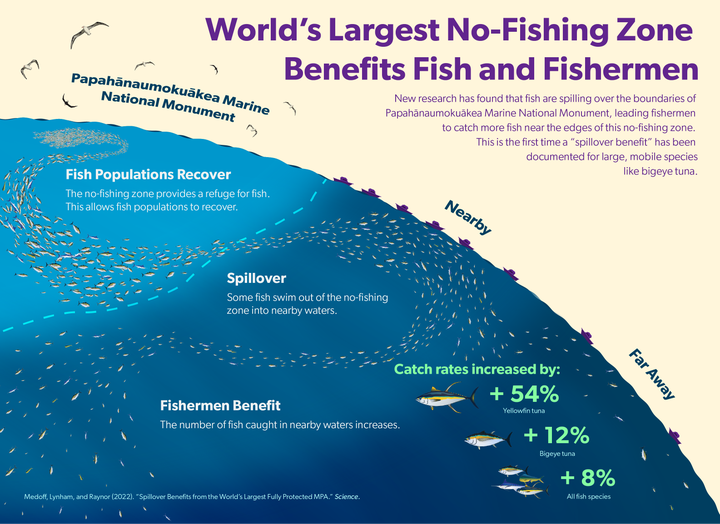The world’s largest protected marine area has been an unexpected boon for migratory tuna, long the bellwether species for overfishing, according to new research published Thursday.
Researchers at the University of Hawaii analyzed data from fishing zones near the Papahānaumokuākea Marine National Monument, a massive protected area near the state that has banned commercial activity for more than 15 years. While the marine protected area, or MPA, was mainly designated to protect local species that don’t move around much, like coral and lobsters, the data suggests the zone has also helped tuna rebound, effectively serving as a fish nursery.
Catch rates of fast-growing yellowfin tuna increased 54% in waters near the protected zone after it was expanded dramatically in 2016. Catches of bigeye tuna, which grow more slowly, have rebounded 12% in that same period.
It’s the first time research has shown a large, well-placed no-fishing zone can help migratory species like tuna — which can travel hundreds or thousands of miles — rebound and have a “spillover” effect in fisheries nearby. The report was published in the journal Science this week.
The research was funded by the National Oceanic and Atmospheric Administration and the National Science Foundation.

“Our hunch going into this if you’re going to see a recovery in a spillover, it’s most likely going to be an overfished species,” said John Lynham, a professor of economics at the University of Hawaiʻi at Mānoa and a lead author on the study. “But we were a little bit surprised at how quickly this was happening.”
Papahānaumokuākea is the largest contiguous marine conservation area in the world. It was first created west of Hawaii in 2006 and then dramatically expanded by President Barack Obama in 2016. It now encompasses more than 582,000 square miles, or about four times the size of California.
The region is home to millions of seabirds and 7,000 species of marine life, many of which are only found in the Hawaiian Islands. All commercial fishing and resource extraction is banned within the boundaries of the monument.
The commercial fishing industry fiercely opposed the expansion of the conservation area in 2016. But Lynham said the data strengthens arguments that sustainability isn’t good just for the environment, but for fisheries too.
“We expect a little bit of skepticism about these results, but fishing crews are seeing this happen on the water,” he said. “The data is literally being collected on board the fishing boats. They’re the ones seeing higher catch rates.”
Tuna aren’t the only migratory species benefiting from the marine protected areas, Lynham stressed. Across all species, catch rates have increased by 8%, a striking figure.
“Just life in general appears to be much more plentiful and more abundant,” he said.

